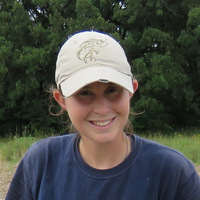- University of Minnesota - Twin Cities, Ecology, Evolution, and Behavior, Graduate StudentUniversity of Notre Dame, Biology, Graduate StudentUniversity of Missouri-Columbia, School of Natural Resources, Post-Docadd
Land managers increasingly use wetland restoration to improve water quality, particularly in cultivated landscapes. In agricultural wetland restoration, managers regularly excavate accumulated sediments eroded from the surrounding... more
Land managers increasingly use wetland restoration to improve water quality, particularly in cultivated landscapes. In agricultural wetland restoration, managers regularly excavate accumulated sediments eroded from the surrounding landscape to increase water storage capacity, decrease invasive species cover, or improve water quality. However, it is unclear whether the effects of sediment excavation are influenced by wetland hydroperiod. Additionally, we lack data on how long excavation effects persist in restored wetlands. We examined dissolved nutrient concentrations (i.e., NH 4 1 , NO 3-, total dissolved N, soluble reactive P, total dissolved P, and dissolved organic C) as proxies for water quality in 54 restored agricultural wetlands ranging from 1 to 10 y post-restoration in the Prairie Pothole Region of west central Minnesota, USA. In 26 of these wetlands, restoration practitioners restored natural (i.e., either seasonal or semipermanent inundation) hydrological regimes by removing subsurface tile drainage and plugging surface drainage ditches (business-as-usual treatment). In 28 wetlands, practitioners removed accumulated sediment and redeposited it on the surrounding landscape (excavated treatment) prior to restoring hydrology. We found that wetlands in the excavated treatment group initially experienced reduced dissolved P concentrations, but over time P levels increased, particularly in wetlands with shorter hydroperiods. Excavated wetlands had lower NH 4 1 and dissolved organic C concentrations compared with business-as-usual wetlands, but the trend was driven by differences between restoration treatments in semipermanent wetlands. N and P dynamics were almost universally related to hydroperiod, both immediately following restoration and over the ensuing years. We postulate that the effects of hydroperiod are likely related to differences in redox conditions via direct mechanisms (water level fluctuations related to hydroperiod) and indirect mechanisms (development of dense emergent macrophyte communities in seasonal wetlands). In basins with seasonal hydroperiod, inorganic N concentrations decreased over time and inorganic P concentrations increased, suggesting net P mobilization concurrent with growing N limitation. Our results illustrate that hydroperiod regulates the expression of legacy P following wetland restoration, with little long-term effect of sediment removal on water quality outcomes.
Research Interests:
Although the effects of Pacific salmon spawners have been well-studied in the Pacific Northwest, their influence remains relatively unexplored across portions of their range including the North Pacific Rim and along the Alaska Peninsula.... more
Although the effects of Pacific salmon spawners have been well-studied in the Pacific Northwest, their influence remains relatively unexplored across portions of their range including the North Pacific Rim and along the Alaska Peninsula. In my first data chapter, I examined whether the influence of salmon on streams and lakes at Izembek National Wildlife Refuge (INWR) was similar to previously studied salmon-bearing ecosystems. At INWR, the impact of salmon was smaller than elsewhere, likely due to small run sizes and regional environmental characteristics including very low background molar nitrogen to phosphorous ratios. Nevertheless, I found that upstream and downstream reaches within a single watershed can respond differently to salmon migration, suggesting that salmon differentially influence freshwater ecosystems depending on landscape position. In my second data chapter, I examined whether marine-derived nutrient subsidies from salmon and waterbirds differ in their effects on lake ecosystems. In general, lakes receiving subsidies had higher nutrient concentrations than lakes with no significant subsidies, and water column chl-a was positively correlated to nutrient availability. However, biofilm nutrient limitation differed between lakes receiving salmon versus waterbird subsidies. In summary, both source and environmental context strongly influences the effect of marine-derived nutrient subsidies in streams and lakes at INWR.
